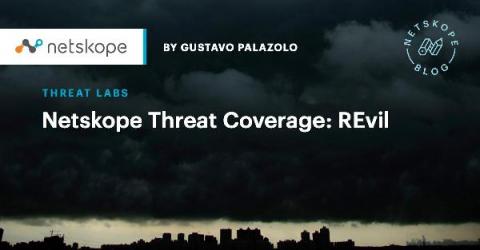Netskope Threat Coverage: REvil
The REvil ransomware (a.k.a Sodinokibi) is a threat group that operates in the RaaS (Ransomware-as-a-Service) model, where the infrastructure and the malware are supplied to affiliates, who use the malware to infect target organizations. On July 2, the REvil threat group launched a supply chain ransomware attack using an exploit in Kaseya’s VSA remote management software. REvil claims to have infected more than one million individual devices around the world.











